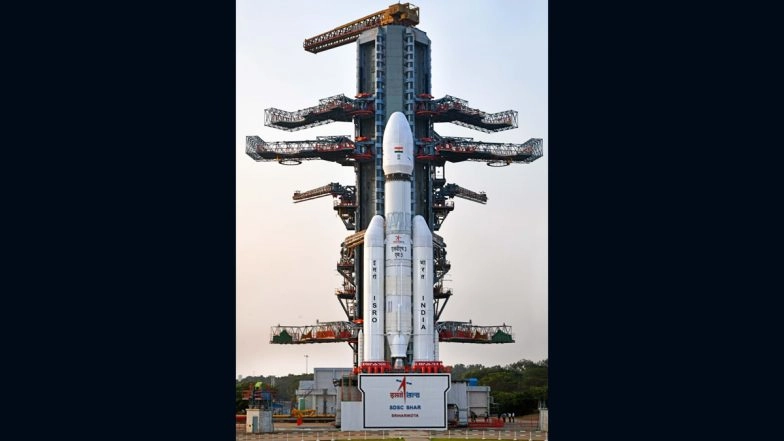Key Takeaways
- ISRO launching GSAT-7R, Indian Navy’s most advanced communication satellite
- Weighing 4,400 kg, it’s India’s heaviest communication satellite
- Will enhance secure naval communications across Indian Ocean Region
- Launch scheduled from Sriharikota using LVM3 rocket
The Indian Space Research Organisation (ISRO) is set to launch the Indian Navy’s GSAT-7R communication satellite from Sriharikota today, marking a significant advancement in the country’s maritime security capabilities.
This indigenous satellite, weighing approximately 4,400 kg, represents the most advanced communication platform developed specifically for the Indian Navy to date.
Enhanced Naval Communications
GSAT-7R (also designated CMS-03) will provide robust telecommunication coverage across the Indian Ocean Region, strengthening the Navy’s space-based communications and maritime domain awareness.
The satellite’s payload includes transponders capable of supporting voice, data, and video links over multiple communication bands. This will significantly enhance connectivity with high-capacity bandwidth, enabling seamless and secure communication between ships, aircraft, submarines, and Maritime Operations Centres.
Advanced Indigenous Technology
According to a Defence Ministry statement, GSAT-7R includes many indigenous state-of-the-art components developed specifically to meet the Indian Navy’s operational requirements.
ISRO stated: “CMS-03 is a multi-band communication satellite that will provide services over a wide oceanic region, including the Indian landmass.”
Launch Vehicle Details
The satellite will be launched using India’s heaviest launch vehicle, the LVM3 rocket, which can carry up to 4,000 kg to space. This marks the fifth operational flight for the LVM3 series, designated LVM3-M5.
ISRO confirmed that the launch vehicle has been fully assembled and integrated with the spacecraft, and was moved to the launch pad on October 26 for pre-launch operations.
Strategic Importance
GSAT-7R represents the Indian Navy’s commitment to protecting the nation’s maritime interests through advanced technology and self-reliance (Aatmanirbharta).
The satellite will succeed the GSAT-7 Rukmini launched in 2013, featuring upgraded payloads designed to expand secure, multi-band communications and strengthen operational reach across critical maritime domains.
The CMS-03 payload specifically includes transponders for voice, data, and video links over C, extended C, and Ku bands.




